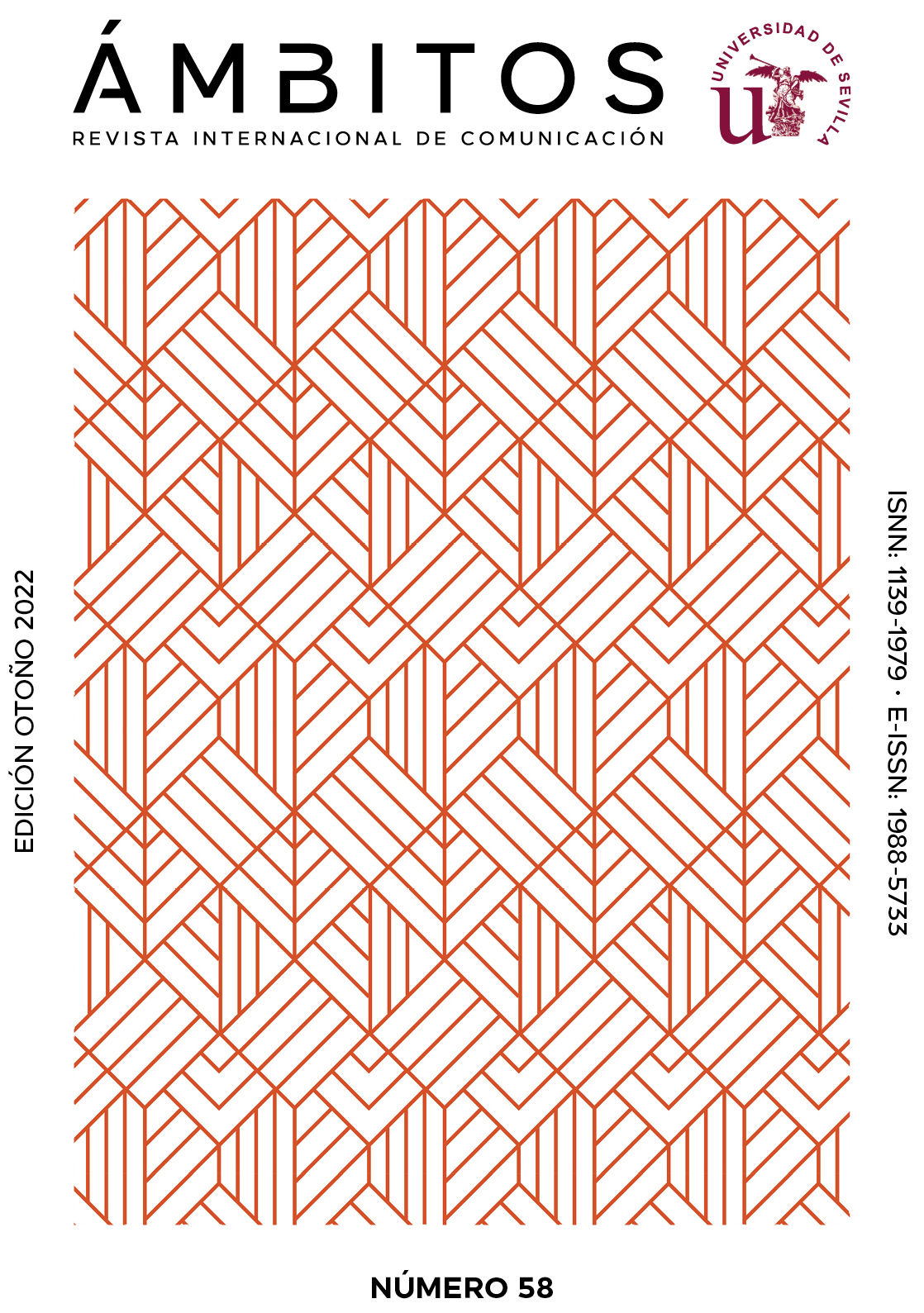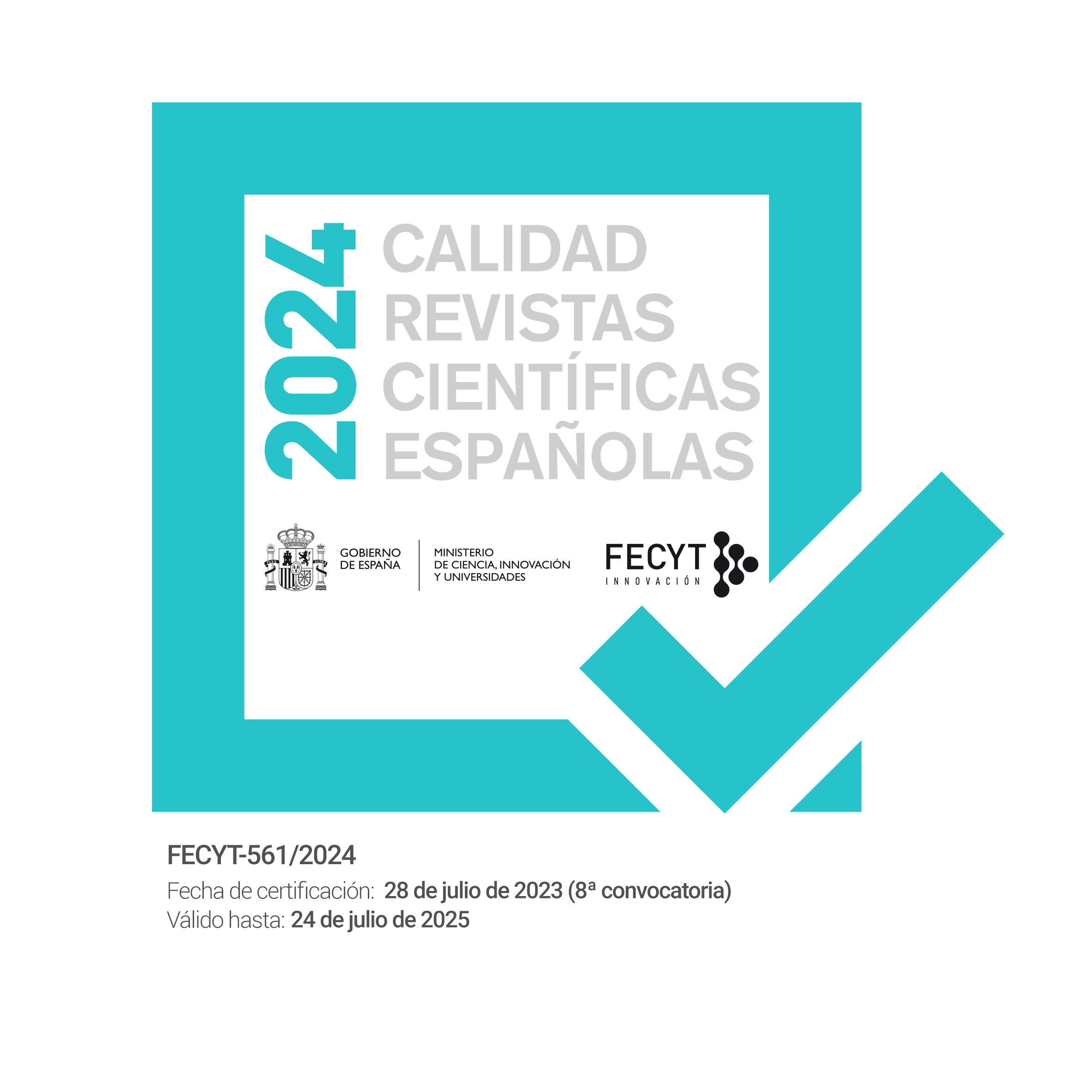Under the guillotine blade: Albert Camus’ contributions to Media Ecology
contribuição de Albert Camus para a Ecologia das Mídias
DOI:
https://doi.org/10.12795/Ambitos.2022.i58.08Keywords:
media ecology, Albert Camus, death penalty, technologyAbstract
This article aims to add to the Media Ecology the contributions offered by Albert Camus in his philosophical essay Reflections on the guillotine ([1957] 2022). For this, a brief chronology of the ecological tradition of the media was outlined — supported, above all, by the legacy left by Marshall McLuhan ([1962] 1972; [1964] 1993) and Neil Postman (1993) — as a way of presenting some of its main references. That said, through a methodology, elaborated from what the work intends to achieve, of a qualitative approach, of a theoretical nature, based on epistemology built on the foundation of the dialogue between the mentioned theoretical perspective and the essayism of Albert Camus. Considering the epistemological presence of complementarity, this dialogism embedded in the reasoning, it is intended to critically discuss the Algerian writer’s argument in order to elucidate how he contributes to the continuity of ecological studies of the media. It can be highlighted, therefore, that Camusian arguments account for the social and psychological repercussions provided by the insertion of the guillotine in French society; represented, in particular, by the promotion of the law of talion in the social fabric, encouraging the notion of justice to become synonymous with revenge and stimulating the awakening of sadism instilled in the hearts of beings. The invention that should symbolize the end of privileges, in fact, exempts the State from blame and centralizes all responsibility for social imbalance in a convict. After all, the legacy of the guillotine is the distortion of the notion of justice and the individualization of collective problems.
Downloads
References
Barbagli, M. (2019). Suicídio no Ocidente e no Oriente. Vozes.
Benjamin, W. (1969). Illuminations. Shocken Books.
Camus, A. (2018). Estado de sítio. Record.
Camus, A. (2019). O homem revoltado. Record.
Camus, A. (2020). A peste. Record.
Camus, A. (2022). Reflexões sobre a guilhotina. Record.
Durkheim. É. (2016). Da divisão social do trabalho. Edipro.
González, H. (1983). Albert Camus: a libertinagem do sol. Brasiliense.
Heilbroner. R. L. (1967). Do machines make history?. Technology and Culture, v. 8, (3), 335-345.
Innis, H. (2011). O viés da Comunicação. Vozes.
Marcondes Filho, C. (2009). Dicionário da Comunicação. Paulus.
Martino, L. C. (2015). De qual comunicação estamos falando?. In A. Hohlfeldt; L. C. Martino & V. V. França (Eds.), Teorias da Comunicação: conceitos, escolas e tendências pp. 11-26.
McLuhan. (1971). O efeito do livro impresso na linguagem do século XVI. In E. Carpenter & M. McLuhan (Eds.), Revolução na Comunicação. Zahar.
McLuhan, M. (1972) A galáxia de Gutemberg. USP.
McLuhan, M. (1993). Os meios de comunicação como extensões do homem. Cultrix.
McLuhan, M. (2020). Aforismos e profecias. Paulus.
McLuhan, M. y Fiore, Q. (2018). O meio é a massagem. Ubu.
Minois, G. (2018). História do suicídio: a sociedade ocidental diante da morte voluntária. Unesp.
Postman, N. (1993). Technopoly: The Surrender of Culture to Technology. Vintage Books.
Santos-Sainz. M. (2016). Albert Camus, periodista: de reportero en Argel a editorialista en Paris. Libros.com.
Strate, L., Braga, A. y Levinson, P. (2019). Introdução à Ecologia das Mídias. Editora PUC-Rio. Loyola.
Downloads
Published
How to Cite
Issue
Section
License
Copyright (c) 2022 Arthur Freire Simões Pires

This work is licensed under a Creative Commons Attribution-NonCommercial-ShareAlike 4.0 International License.
Ámbitos. Revista Internacional de Comunicación is an open access journal, which means that all content is freely available at no charge to the user or their institution. Users may read, download, copy, distribute, distribute, print, search or link to the full text of articles, or use them for any other lawful purpose, without seeking prior permission from the publisher or author. This definition of open access is in accordance with the Budapest Open Access Initiative (BOAI).

Unless otherwise noted, all content in the electronic edition is distributed under a "Creative Commons Attribution-NonCommercial-ShareAlike 4.0 International License". You can consult the informative version and legal text of the licence here. This should be expressly stated in this way where necessary.
In case of acceptance of the manuscript, the authors cede the rights of the work for its publication to Ámbitos. Revista Internacional de Comunicación under the Attribution-NonCommercial-ShareAlike 4.0 International license contract (CC BY-NC-SA 4.0). The authors retain copyright and third parties are authorised to copy, distribute and make use of the work, provided they comply with the terms and conditions set out in the licence
- Cite the authorship and the original source of publication (journal, publisher and URL of the work).
- Do not use them for commercial purposes.
- If you remix, transform or create from the material, you must release your contributions under the same license as the original.
More information can be found at https://creativecommons.org/licenses/by-nc-sa/4.0/deed.es


















